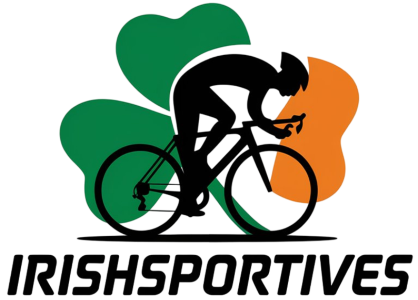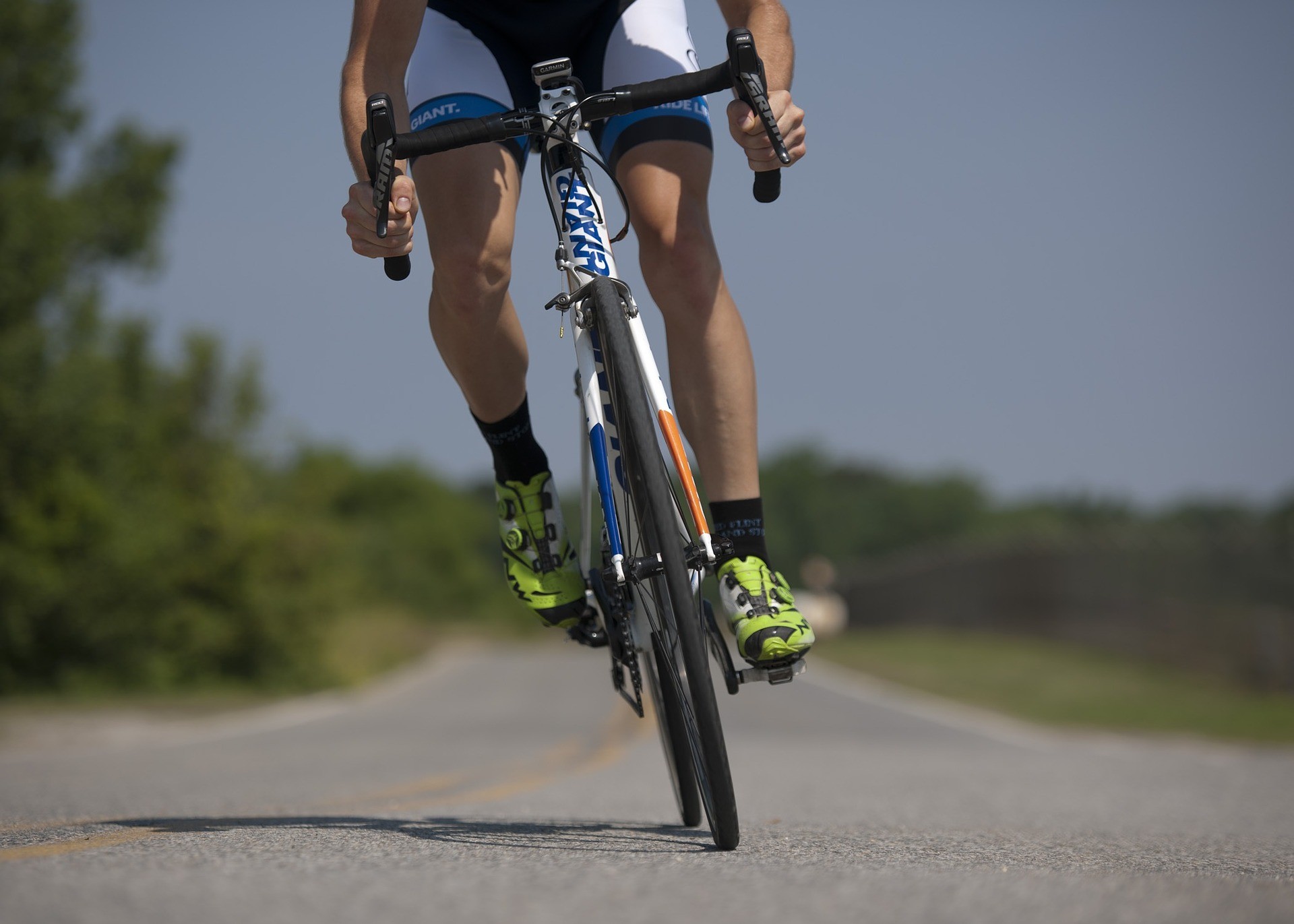When you look at the Tour de France or other great bike races do you notice how smoothly the riders pedal? Most of the great cyclists have the ability to spin the pedals at a fast cadence as well as having the strength to push big gears when required. This comes about through years of cycling lots of kilometres on the bike.
While some of the champions might have a natural ability to pedal at high cadence it’s also a skill that can be developed with good understanding of your gears and training.
Now is a great time for you to develop your pedaling and here’s a few ways to do it.
Cycling Cadence
First of all we are going to be seeing cadence mentioned so lets define it. Cadence: is the number of Pedal revolutions per minute (rpm)
Less experienced cyclists
Less experienced cyclists usually struggle for a while to get gears and cadence right. However,your brain and muscles can adapt and refine the efficiency of your pedalling with training.
At any bicycle events there will be noticeable differences between some of the competitors / participants cycling cadence and smoothness of pedaling
Why is good cycling cadence important?
Optimal cadence while cycling gives good control of the bike. Improves the ability to change pace and is less taxing on the body. Fatigue will be reduced if the cadence is suitable for the efforts and terrain.
You can pedal like a Pro too
By following a few simple principles and learning some key information you can make massive improvements in pedaling efficiency.
Great pedaling
The’ key to great pedaling is to understand your gears and cadence. How they affect your physiology and fitness This will help in refining and smoothing your pedaling routine.
Over time you should be able to feel what’s the correct gear and know exactly when to change gears.
Gearing
How gears are measured. The number of teeth on the chain ring on the crank (usually 53 and 39. and teeth on the wheel sprocket ( often from 12 to 23 teeth) used on the back wheel determine the gear size. This Is sometimes known as the rollout as its the distance covered for one revolution of the pedals on a particular gear.

For example: One revolution of the pedals on a chain ring of 53 teeth and sprocket of 13 teeth the distance covered will be 8.56 metres.
A climbing gear of 39 chain wheeel x 23 sprocket will travel 3.57 metres
The photo on the right is of a Professionals TT Bike in the Giro d Italia in Belfast
The gearing on modern road bikes are usually good for most hills and flat roads that riders cycle. However Professional and elite racers sometimes need to make changes to sprockets or chain wheels for specific events or very steep climbs.. All about gears
The main mistakes
Some riders pedal much too fast undergeared or too slow over geared
Professional cyclists cadence
Professional cyclists use a cadence range of 70 to 130 RPM depending on various conditions. However, their average cadence is usually around 90 RPM
Time trial Sportive or leisure cyclists would usually operate in a narrower band of 80 to 100 rpm
How to select the best gear ratio
Selecting the most suitable gear for the conditions can be learned quite easily. And with some effort can then be refined and become automatic for the cycling section.
Effect of low and high cadence on the cyclist.
Relate it to driving a car when you are on the open road. It’s usual to drive at a speed in a gear and RPM that is most efficient for the car. It’s the same for the human body. if you need to accelerate to pass another car you use a low gear that can be revved fast. If you want to cruise and save petrol you use a bigger gear at medium revs.
Cadence too low (pushing/ stomping)
If very low revs are used the main demands are on the muscles and ligaments and muscles tire quicker.
Cadence too high
If the revs are too high: it places heavy demands on the cardiovascular system so you get out of breath more quickly.
Ideal cadence zones
With experience you will learn to know exactly when you are at the best cadence for various situations.Every individual will be slightly different in regard to ideal cadence. but there is a zone where the majority of cyclist operate best. This is usually between 80 to 100 RPM
Study the professional Triathletes or Cycling time trial specialists on video . Their cadence is usually within a fairly narrow zone according to what suits them best.
The majority of elite Triathletes and cyclists ride time trials between 80 to 105 pedal revs per minute. However within that zone some might prefer to ride the course between 80 to 90 revs and others might ride the course between 90 to 105 revs.
Vary your routes
Cycling on various types of routes will let you know what cadence works best for you. Your climbing cadence will probably be a bit lower than cadence on the flat.
Develop greater pedaling efficiency
As the days are getting longer and warmer there are great opportunities to work on choosing the best gears and cadence for your cycling.
The 3 big questions for efficient cadence
Get in touch with your feelings
Ask yourself these questions while cycling.
- Am I pedaling too fast? Are the pedals running away from me?
- Am I pushing too hard? Does the gear feel sluggish/ am I slogging?
- Does this gear and cadence feel perfect?
Play around with the gears and try various gears and cadence to learn what suits you best. Focus on what feels right for you rather than what sprocket you are using.
[the_ad id=”1550″]
Tools to improve pedalling efficiency
A simple cadence meter is very useful to learn what the various cadences feel like..
Use the cadence meter for some of the efforts. And maintain the effort within the zone you are targeting. For example if you want to maintain around 90 rpm then operate in between 85 to 95 RPM.
When it drops below 85 change to a larger sprocket….. if it increases above 95 rpm change to a smaller sprocket. Do not get obsessive about staying in the cadence zone. Its ok to go above or below the targets now and again it should not be a problem. For example when tired near the end of a long cycle the most important thing is to select what gear gets you home in decent shape.
A few tips
Chase the pedals when the road dips slightly
Try to keep up with the increase in cadence by remaining on the same gear as the road dips during sessions. Do this in a relaxed manner and only for short period of time.
Single gear for commute
Use a single freewheel or fixed sprocket with a low gear for work or college commute. This will develop very smooth pedaling as the cadence will be high for short periods of time.
High cadence efforts
Do some 20 – 60 seconds efforts at high cadence every twenty minutes during some sessions. Stay relaxed and just let the legs spin. If you begin to bounce on the saddle change the gear to lower the cadence.
Rollers and turbo trainer
Try using rollers rather than a turbo for some of your indoor training. This is especially useful for young cyclists as it’s great for balance and bike control as well as smooth cadence. Vary cadence when doing turbo sessions. Get advice or some coaching if using rollers as they are difficult to learn initially. Rollers need to be used in a safe environment, as its possible to fall off the rollers.
Don’t obsess
It doesn’t matter if you are outside your ideal cadence for short periods of time.
Safety
:Only glance at the computer now and again and keep your eyes on the road and other traffic at all times.
Use your best computer
This is going to sound far too simple but don’t get in the way of the best computer known. That’s your brain. If you don’t have a cadence meter, just go out on the bike and pedal according to what feels natural and your brain will do the rest if you let it…
Check out Paddy’s e-book introduction to cycling here [the_ad id=”1550″]


